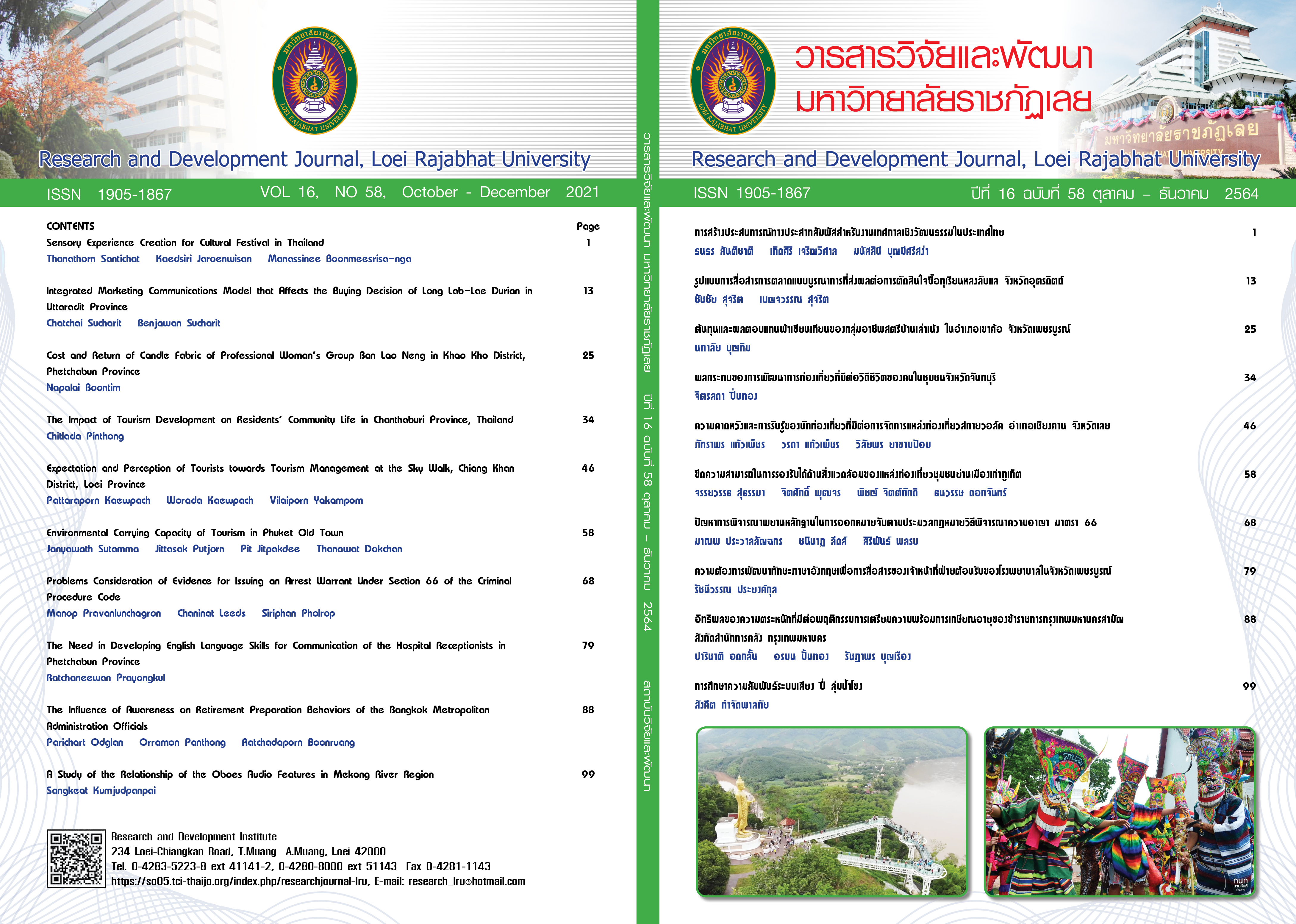Problems Consideration of Evidence for Issuing an Arrest Warrant Under Section 66 of the Criminal Procedure Code
Keywords:
arrest warrants, consideration of evidence, causes for issuing an arrest warrantAbstract
The objectives of this thesis were: 1) to study concepts, theories for issuing arrest warrants in criminal cases; 2) to study legal principles regarding arrest and issuing arrest warrants according to Thai Law and foreign law; 3) to study analyze and comparison about concept, cause and procedure for issuing an arrest warrant between Thai law and foreign law; and 4) find ways to amend the law related to the cause of the arrest warrant. Which is documentary research.
The results of the thesis found that: 1) the issuance of a Thai court arrest warrant be in line with The Crime Control Model; 2)causes for issuing an arrest warrant according to Thai law give court a chance can be weighed by discretion when issuing an arrest warrant. In England, at present there are very few arrests by court warrants. The United States relies heavily on evidence for arrest warrants. In France, the reason for an arrest warrant is that the person escapes or resides outside the French territory; 3) the issuance of a Thai arrest warrant is the jurisdiction of the courts only same as England, United States of America and France. The difference between United States of America and France is that the prosecutor will be involved in the process of issuing a warrant and in the United States, those issued with an arrest warrant have the right to dispute the issuance of an arrest warrant and focus on probable cause in issuing a warrant for arrest; and 4) there should be amendments to the text, section 66 of the Criminal Procedure Code, both subsection (1) and subsection (2) original provisions “When there is the evidence as may be reasonable to anyone likely to have committed the criminal offence” edit to “When there is the evidence as may be reasonable to probable cause that anyone have committed the criminal offence”
References
กระทรวงการต่างประเทศ, กรมองค์การระหว่างประเทศ (2551, กรกฎาคม). ปฏิญญาสากลว่าด้วยสิทธิมนุษยชน. สืบค้นจาก http://humanrights.mfa.go.th/upload/pdf/udhr-th-en.pdf
คณิต ณ นคร. (2561). กฎหมายวิธีพิจารณาความอาญา (พิมพ์ครั้งที่ 9). กรุงเทพฯ: วิญญูชน.
ณรงค์ ใจหาญ. (2552). หลักกฎหมายวิธีพิจารณาความอาญา เล่ม 1 (พิมพ์ครั้งที่ 10). กรุงเทพฯ: สำนักพิมพ์วิญญูชน.
ไทยรัฐฉบับพิมพ์. (2559, 19 สิงหาคม). จับสาวแสบ แจ้งเท็จทำคนอื่นเดือดร้อน. สืบค้นจาก https://www.thairath.co.th/content/694833
ปาลิดา ไตรสารศรี. (2554). การกลั่นกรองการออกหมายจับ (วิทยานิพนธ์ปริญญานิติศาสตรมหาบัณฑิต). มหาวิทยาลัยธรรมศาสตร์, กรุงเทพฯ.
ราชกิจจานุเบกษา. (2548). ข้อบังคับของประธานศาลฎีกาว่าด้วยหลักเกณฑ์และวิธีการเกี่ยวกับการออกคำสั่งหรือหมายอาญา พ.ศ. 2548. สืบค้นจาก http://www.ratchakitcha.soc.go.th/DATA/PDF/2548/00154922.PDF
ศาลยุติธรรม. (ม.ป.ป.(ก)). รายงานประจำปีของศาลยุติธรรมและสำนักงานศาลยุติธรรม ประจำปีงบประมาณ 2560. สืบค้นจาก https://oppb.coj.go.th/th/content/category/detail/id/8/cid/2081/iid/95017
ศาลยุติธรรม. (ม.ป.ป.(ข)). รายงานประจำปีของศาลยุติธรรมและสำนักงานศาลยุติธรรม ประจำปีงบประมาณ 2561. สืบค้นจาก https://oppb.coj.go.th/th/content/category/detail/id/22/iid/140051
Downloads
Published
How to Cite
Issue
Section
License
ข้อความที่ปรากฎในวารสารฉบับนี้เป็นความคิดเห็นของผู้เขียนแต่ละท่าน สถาบันวิจัยและพัฒนา มหาวิทยาลัยราชภัฏเลย และกองบรรณาธิการ ไม่จำเป็นต้องเห็นด้วยและไม่มีส่วนรับผิดชอบใดๆ
สถาบันวิจัยและพัฒนา มหาวิทยาลัยราชภัฏเลย ขอให้ผู้อ่านอ้างอิงในกรณีที่ท่านคัดลอกเนื้อหาบทความในวารสารฉบับนี้






